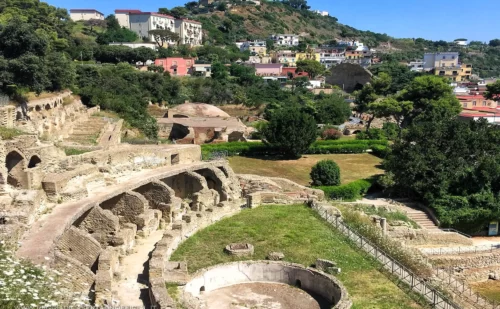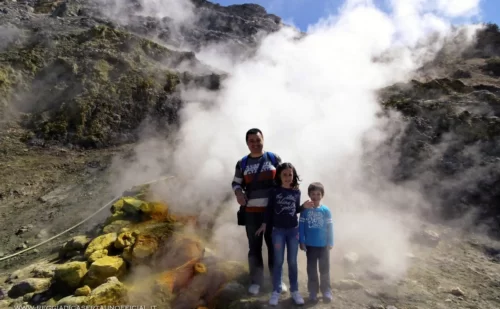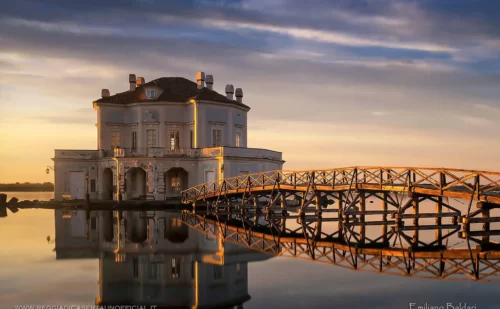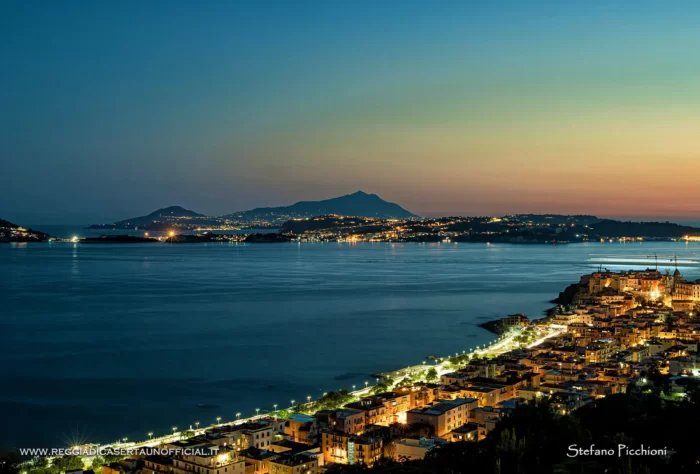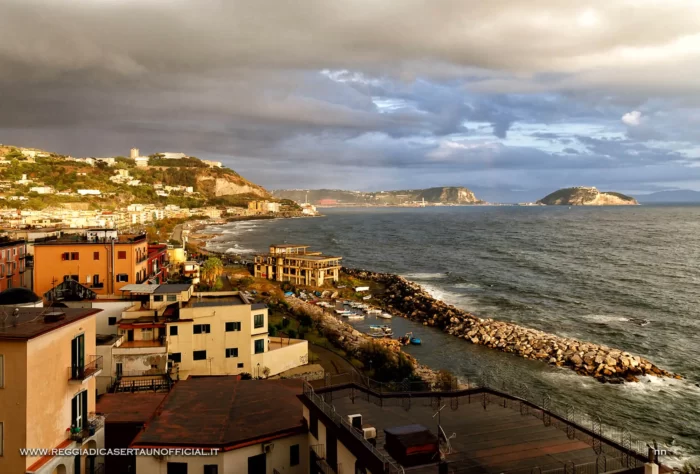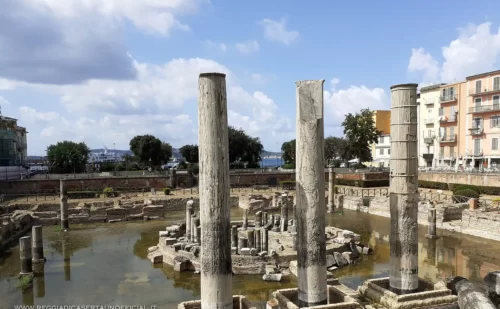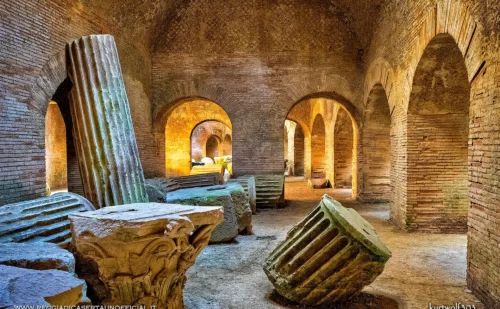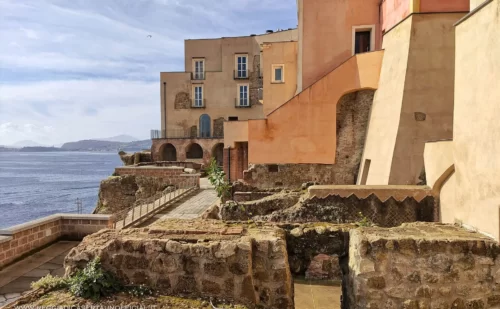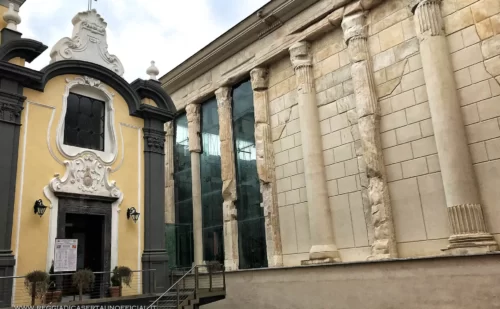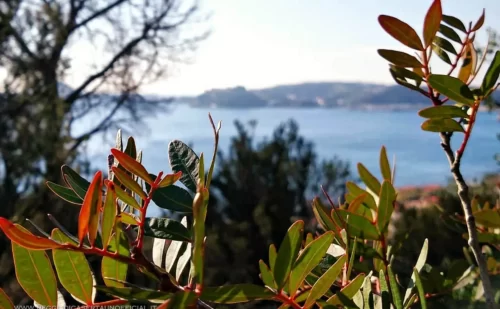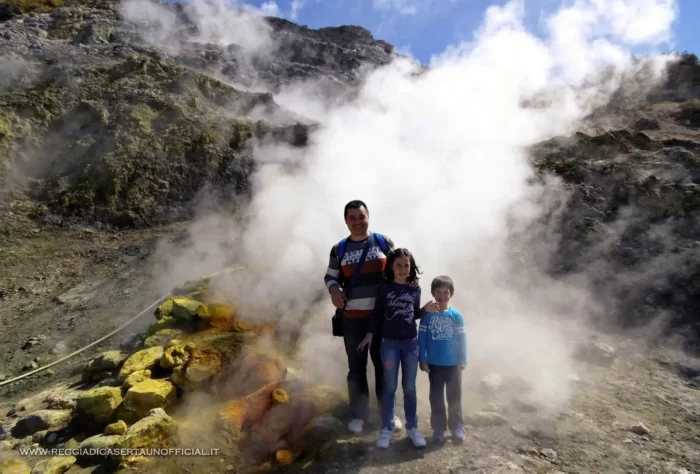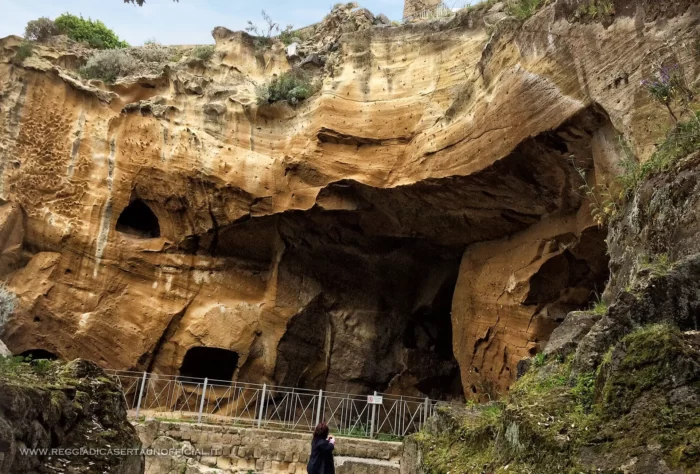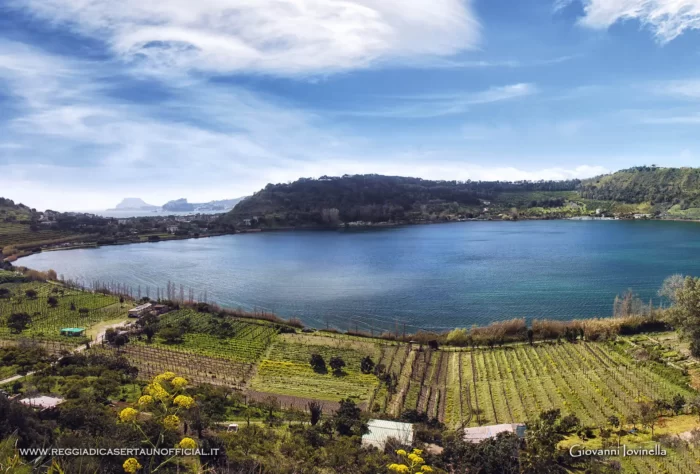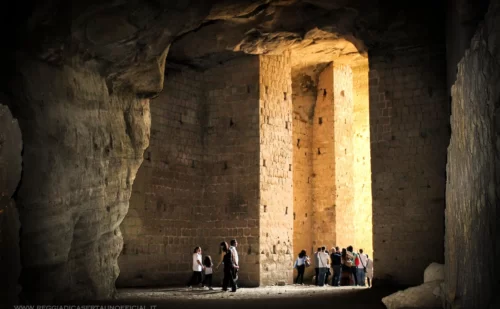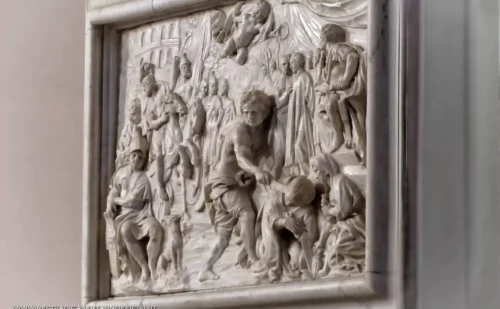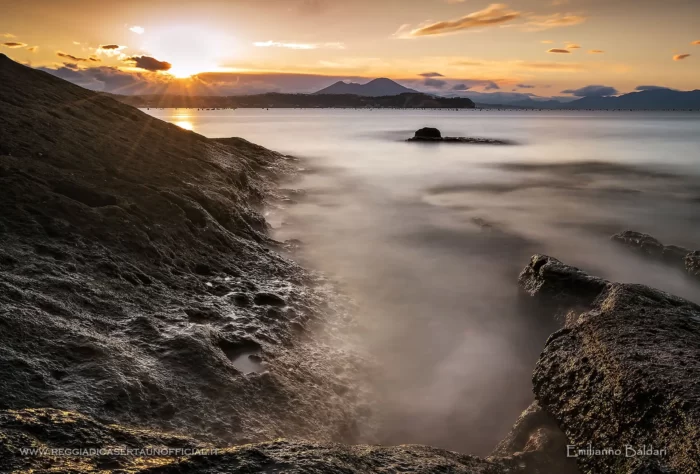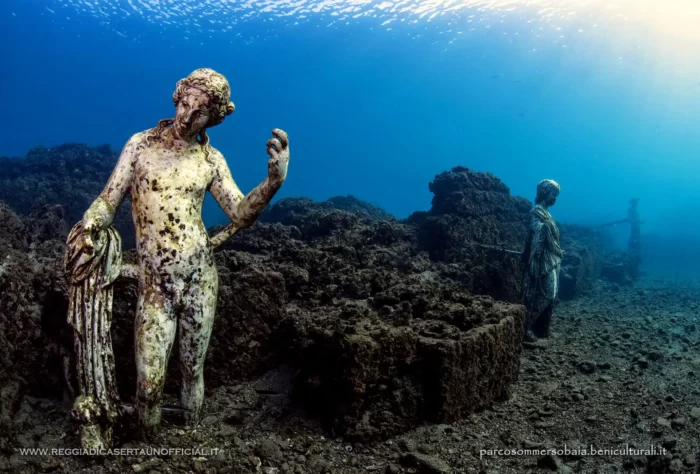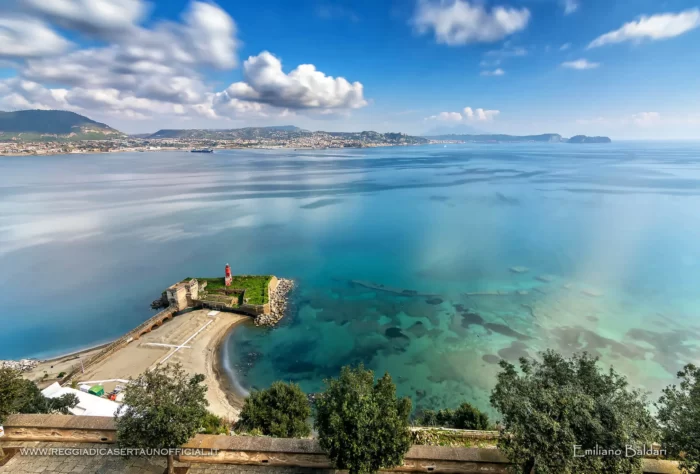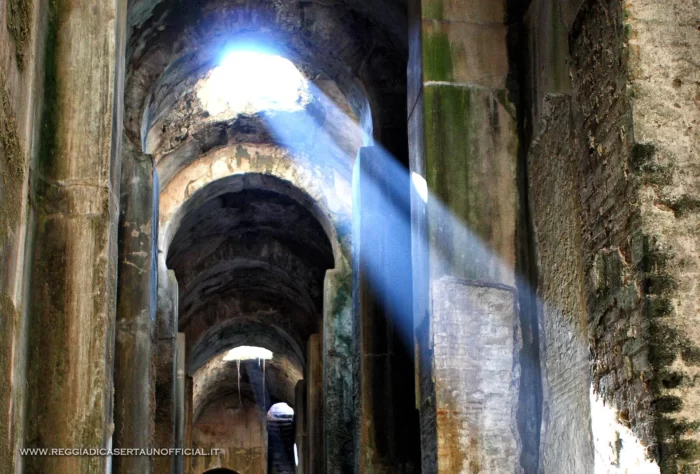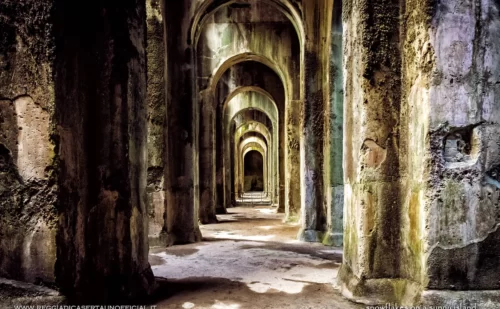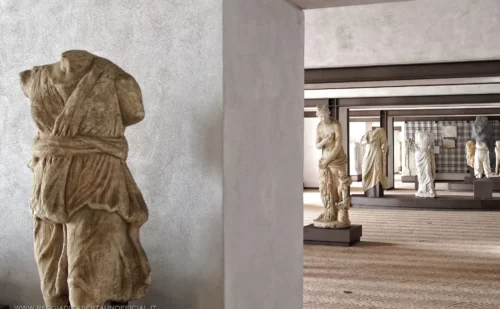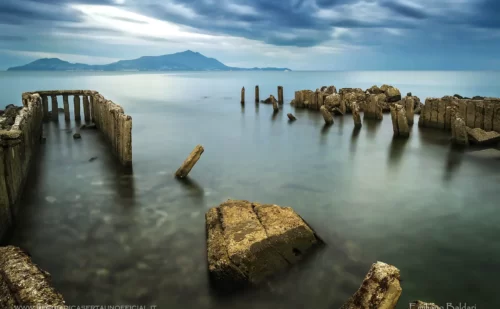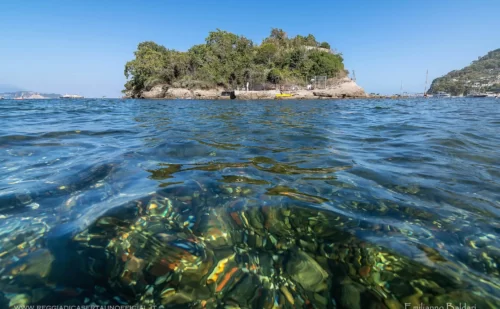Pozzuoli, the Campi Flegrei, Baia and Bacoli
Pozzuoli and the Campi Flegrei's Solfatara, the Roman amphitheater, the archaeological parks, the submerged Roman city of Baia, the cave of the Sibilla Cumana, the Casina Vanvitelliana. All surrounded by wonderful landscapes.
Pozzuoli
Pozzuoli is a city in the province of Naples, on the northern coast of the gulf of the same name which opens onto the gulf of Naples. The town rises from the sea, overlooked by a picturesque port, towards the Campi Flegrei. Founded by Greek colonists from Samos in the sixth century. BC, it was the port of Cuma and then of Rome and a holiday resort for the Roman patricians. It declined with the barbarian invasions. It preserves the remains of famous Roman monuments, including the amphitheater and the temple of Serapis.
Temple of Serapis
The so-called Temple of Serapis, actually in Roman times it was the macellum, the meat and fish market which, then as now, overlooks the port of Pozzuoli. There are also the ancient latrines.
- OPENING DAYS: Thursday, Saturday and Sunday
- HOURS: 10:00 - 13:00 (Thursday), 10:00 - 17:00 (Saturday and Sunday)
The Flavian Amphitheater
The Flavian Amphitheater of Pozzuoli is the third largest after the Colosseum and the amphitheater of ancient Capua. It housed 40,000 spectators.
- from January 2 to January 15 9.00 - 16.00
- from 16 January to 31 January 9.00 - 16.20
- from 1 February to 15 February 9.00 - 16.40
- from 16 February to 29 February 9.00 - 17.00
- from March 1st to March 15th 9.00 - 17.20
- from 16 March to 31 March 9.00 - 17.40
- from April 1 to April 15 9.00 - 18.00
- from April 16 to April 30 9.00 - 18.20
- from 2 May to 31 August 9.00 - 20.00
- from 1 September to 15 September 9.00 - 18.30
- from 16 September to 30 September 9.00 - 18.00
- from 1 October to 15 October 9.00 - 17.40
- from 16 October to 31 October 9.00 - 17.15
- from 1 November to 15 November 9.00 - 16.00
- from 16 November to 30 November 9.00 - 15.45
- from December 1st to December 31st 9.00 - 15.45
Rione Terra
The Rione Terra is an ancient district of Pozzuoli built on a cliff overlooking the sea. Founded in the 4th century BC. it became a famous city, In 1970 it was abandoned due to bradyseism which made it dangerous. It is now open again.
Cathedral of Pozzuoli
The Cathedral of Pozzuoli was built in the 5th century AD. incorporating the remains of the Temple of Augustus from 27 BC. C, to then be transformed into the Baroque style of 1736. It rises in the Rione Terra and is dedicated to San Procolo Martire
Oasis of Montenuovo
Located in the area of Lucrino, in Pozzuoli, the Oasis of Montenuovo takes its name from the fact that, in 1538, the last explosive eruption of Campi Flegrei gave rise to a new mountain. Today there are many nature trails with breathtaking views of the coast and the volcano's crater.
The Campi Flegrei (Phlegrean fields)
Volcanic region of Campania, where the Greeks located the site of the mythical battle between the giants, who had attempted to climb Olympus, and the gods, which ended with the defeat of the giants. The region is made up of volcanic reliefs between the Sebeto river and Mount Cuma; the southern appendix ends in Cape Miseno. The highest peak is Mount Camaldoli (458 m), in the western section; in the eastern one there are two lake mirrors: the lake of Averno and the lake of Fusaro. Volcanic activity gave rise, in historical times, to the formation of Monte Nuovo, to the west of Pozzuoli, and is still present with solfataras, mofete and thermal springs. Bradyseismic phenomena are accentuated. The region, favored by the nature of the soil and the climate, is one of the most fertile in Italy: some areas have recently been reclaimed. The main centers are located on the southern (Bacoli, Baia and Pozzuoli), eastern (Naples) and northern (Marano) edges.
The Solfatara
Solfatara is one of the 40 volcanoes of Campi Flegrei, and is still active and explosive. It has a size of 770x580m and is equipped with sulfur dioxide fumaroles, hot mud jets and a high ground temperature.
Archaeological Park of Cuma
The Archaeological Park of Cuma is located above the hill overlooking the sea and offers exciting views as you walk the paths of the high ground. After passing the old city walls, you enter the Antro della Sibilla Cumana. Do not miss the temple of Jupiter, transformed into a basilica, and the Temple of Apollo, built on the spot where Daedalus landed after flying into the sky with Icarus
- from January 2 to January 15 9.00 - 16.00
- from 16 January to 31 January 9.00 - 16.20
- from 1 February to 15 February 9.00 - 16.40
- from 16 February to 29 February 9.00 - 17.00
- from March 1st to March 15th 9.00 - 17.20
- from 16 March to 31 March 9.00 - 17.40
- from April 1 to April 15 9.00 - 18.00
- from April 16 to April 30 9.00 - 18.20
- from 2 May to 31 August 9.00 - 20.00
- from 1 September to 15 September 9.00 - 18.30
- from 16 September to 30 September 9.00 - 18.00
- from 1 October to 15 October 9.00 - 17.40
- from 16 October to 31 October 9.00 - 17.15
- from 1 November to 15 November 9.00 - 16.00
- from 16 November to 30 November 9.00 - 15.45
- from December 1st to December 31st 9.00 - 15.45
Cave of the Cumanan Sibyl
The Antro della Sibilla Cumana is a huge trapezoidal corridor 130 m long which, according to legend, was the place where the oracle of the Sibilla Cumana reported the messages of the god Apollo to mortals
Lake Avernus
Secondo il poeta Virgilio (sesto libro dell'Eneide) il lago d'Averno è l'ingresso agli Inferi, dove l'eroe Enea deve recarsi. Il lago nasce all'interno di un cratere vulcanico spento, nato 4000 anni fa. Un lago conosciutissimo anche nella serie tv Xena la Principessa Guerriera
Sanctuary of Saint Gennaro at the Solfatara
The place where, according to tradition, San Gennaro was beheaded. In the first chapel there is still the stone on which the decapitation took place and it is said that, in the days when the blood of the Saint is liquefied in Naples, a few drops of blood would appear on this stone.
Bacoli and Baia
“I left the day after my arrival: it’s a place to avoid, despite certain natural beauties […] what need is there to see drunk people wandering on the beach, reveling on ships? ”
Archaeological Park of Baia
With its ruins that emerge from the vegetation it almost resembles Central America. In addition to the various temples and buildings, there is a huge thermal structure divided into several levels, considered in antiquity as the most equipped with types of thermal waters, and was frequented by emperors and nobles. There is also the gigantic imperial palace, partly submerged
- from January 2 to January 15 9.00 - 16.00
- from 16 January to 31 January 9.00 - 16.20
- from 1 February to 15 February 9.00 - 16.40
- from 16 February to 29 February 9.00 - 17.00
- from March 1st to March 15th 9.00 - 17.20
- from 16 March to 31 March 9.00 - 17.40
- from April 1 to April 15 9.00 - 18.00
- from April 16 to April 30 9.00 - 18.20
- from 2 May to 31 August 9.00 - 20.00
- from 1 September to 15 September 9.00 - 18.30
- from 16 September to 30 September 9.00 - 18.00
- from 1 October to 15 October 9.00 - 17.40
- from 16 October to 31 October 9.00 - 17.15
- from 1 November to 15 November 9.00 - 16.00
- from 16 November to 30 November 9.00 - 15.45
- from December 1st to December 31st 9.00 - 15.45
Submerged Park of Baia
Almost as if it were Atlantis, the Submerged park of Baia is a true wonder and, thanks to a boat with a transparent bottom, it allows you to see the ancient submerged city of Baia, which ended up under water due to the brazisism.
The Casina Vanvitelliana
At the center of Lake Fusaro, and designed by Carlo Vanvitelli, the Casina is a refined octagonal building used by the Bourbons as a hunting lodge. In the past it also hosted Rossini and Mozart.
The Mirabilis Pool
The Piscina Mirabilis is a colossal water cistern from the time of the emperor Augustus, the largest ever built. Entirely excavated in the tuff, it is 72x25m wide and 15m high, with a capacity of 12,000 cubic meters of water. It has a barrel ceiling supported by 48 huge pillars, and five naves. It looks like a cathedral dug underground!
- OPENING DAYS: from Friday to Sunday
- HOURS: 9:30-13:00 - 14:30-17:00
Archaeological Museum of the Campi Flegrei
Located inside the Aragonese Castle, the Archaeological Museum of the Campi Flegrei collects the archaeological finds of Pozzuoli, Cuma, Baia and the Campi Flegrei.
- OPENING DAYS: open every day except Monday
- HOURS: 9:00-20:00
Roman beach
The Roman beach is one of the most beautiful in the Campi Flegrei, and preserves the remains of the Roman villa of Publius Servilius Vatia, Roman consul
Activities and things to do in Pozzuoli
Find out what to do in Pozzuoli and Campi Flegrei
Guided visit to Pozzuoli and Campi Flegrei
Do you want to visit Pozzuoli and Campi Flegrei with a licensed tour guide? Request information about a tour.
Documentary about Pozzuoli and Campi Flegrei
Find out what there is to see in the city of Pozzuoli and in the Campi Flegrei

